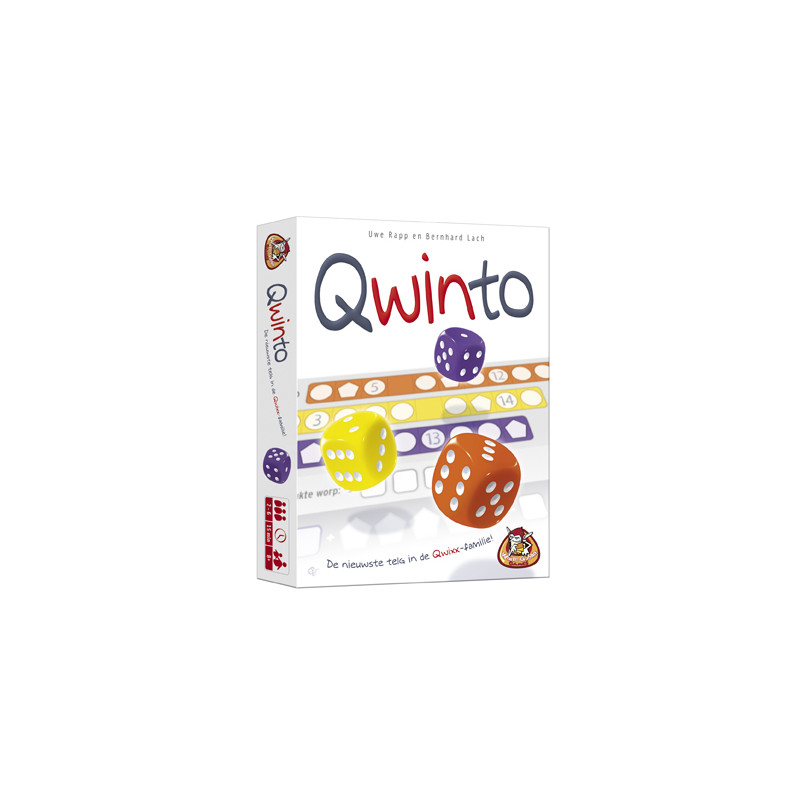



Players in Qwinto all play at the same time, with everyone trying to fill the rows on their scoresheets with numbers as quickly — and as highly — as possible in order to score the most points.
To set up, each player receives a scoresheet that contains three colored rows of shapes (mostly circles with a few pentagons); the rows don’t completely overlap, but they do overlap enough to create five vertical columns of three shapes, with one pentagon being in each vertical row.
On a turn, a player rolls 1–3 dice, with the dice being the same colors as the rows: orange, yellow, purple. Each player can place whatever sum is rolled into an empty shape in a row that matches the color of one of the dice. Two rules must be followed when placing a sum in a row:
All numbers in a row must increase from left to right.
No number can be repeated in a vertical column.
A player does not have to enter the number in a row, but if the active player, the one who rolled the dice, doesn’t do so, then they must mark a misthrow box on their scoresheet.
The game continues until someone has filled two rows on their scoresheet or someone has tallied four misthrows. Players then tally their points: For each completed column on their scoresheet, a player scores points equal to the number in that column’s pentagon. For each completed row on their scoresheet, a player scores points equal to the rightmost number in that row. For each incomplete row on their scoresheet, a player scores one point per number in that row. For each misthrow, a player loses five points. Whoever has the highest sum wins!
![[Beschädigt] Illuminati (Second Edition): Alternative Truths](https://www.spelshop.be/15320-home_default/damaged-illuminati-second-edition-alternative-truths.jpg)